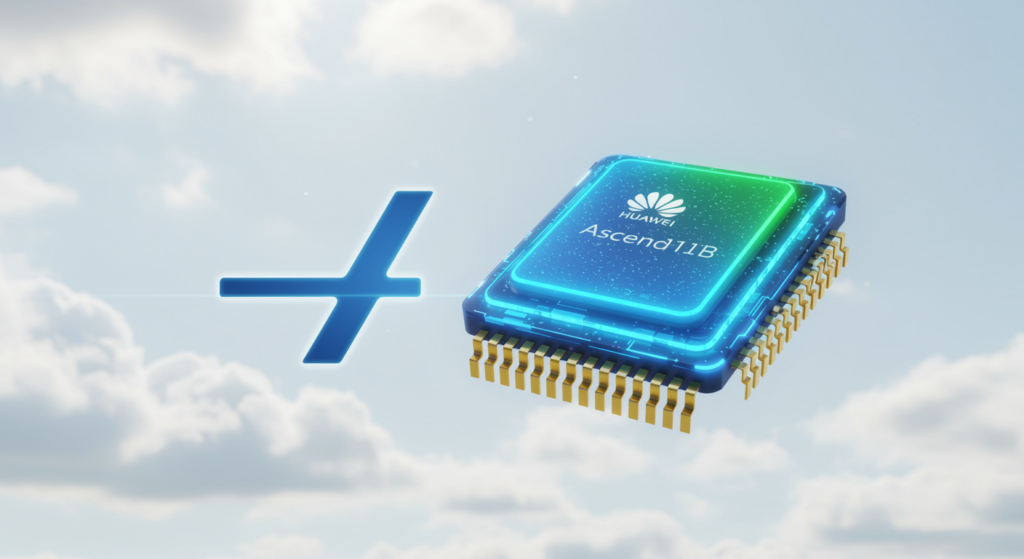
Huawei AI Chip: Huawei Develops New Rival to Nvidia
Introduction to Huawei AI Chips
In the fast-evolving world of technology, the Huawei AI Chip is making waves as a potential game-changer. Huawei, the Chinese tech giant, has poured resources into its Ascend series, positioning it as a direct competitor to Nvidia’s GPUs. This push gained momentum after US export restrictions limited access to advanced American chips, creating an opening for Huawei to step up.
At the heart of this effort is the Ascend 910B, which promises computing power on par with Nvidia’s A100. Yet, early users have highlighted hurdles like slower processing speeds and connectivity issues that could affect real-world applications. Have you ever wondered how geopolitical tensions shape tech innovation?
It’s fascinating to see how the Huawei AI Chip embodies China’s drive for self-reliance, offering a glimpse into the future of global AI development.
US Export Restrictions and Their Impact on the Huawei AI Chip Market
US export restrictions have fundamentally altered the landscape for AI hardware, giving the Huawei AI Chip a chance to shine in China. These rules bar companies like Nvidia from selling their cutting-edge GPUs to Chinese entities, leaving a void that Huawei is eager to fill. This shift not only boosts domestic players but also sparks a wave of innovation born from necessity.
For instance, without access to Nvidia’s latest models, Chinese firms are turning to Huawei’s offerings, even if they’re not perfect yet. Imagine a scenario where your favorite AI tool suddenly becomes unavailable—how would you adapt? This restriction has accelerated Huawei’s growth, though it still grapples with matching Nvidia’s reliability.
Ascend 910B Performance: A Closer Look at Huawei AI Chip Capabilities
The Ascend 910B, a key model in the Huawei AI Chip lineup, has shown impressive results in specific benchmarks. In tests for training large language models, it achieves about 80% of the efficiency of Nvidia’s A100, and in some cases, it even outperforms it by up to 20%. These figures highlight the chip’s potential, drawing from a study by industry analysts.
However, users report ongoing challenges with speed and stability, which can slow down complex tasks. This mix of strengths and weaknesses makes the Ascend 910B a compelling, if imperfect, alternative. What if these issues were resolved—could the Huawei AI Chip truly dominate?
Despite the setbacks, early adopters are optimistic, using it for applications like image recognition and data processing.
Competition and Innovation in the Huawei AI Chip Landscape
The broader Huawei AI Chip story fits into a booming market projected to reach $71.3 billion in 2024. With giants like Nvidia, Google, and Intel vying for supremacy, Huawei’s entry adds a layer of excitement and competition. This growth is driven by the insatiable demand for faster, more efficient AI solutions across industries.
Huawei’s focus on self-sufficiency aligns with China’s national goals, pushing the boundaries of what’s possible in chip design. For example, while Nvidia leads with its A100 and H100 GPUs, Huawei is innovating by blending older technologies to create new hybrids. It’s like watching a startup challenge established players—full of potential and surprises.
Key Players Shaping the AI Chip Market Beyond Huawei
In this crowded field, Nvidia remains the benchmark with its powerful GPUs, but others are close behind. Google offers Cloud TPUs tailored for AI workloads, while Intel brings Gaudi accelerators to the table. Then there’s Alibaba with its Hanguang 800 chip, optimized for inference tasks, and IBM’s AIU for generative AI platforms.
Each player brings unique strengths, but the Huawei AI Chip stands out for its strategic response to global restrictions. This diversity fosters innovation, as companies learn from one another. Could collaboration between these rivals lead to even better technology for everyone?
From a user’s perspective, having options like Huawei’s Ascend series means more choices, potentially lowering costs and improving accessibility.
Huawei’s Strategy and Challenges in AI Chip Development
Huawei’s game plan for its Huawei AI Chip involves clever engineering, like combining existing designs to build more advanced models. This approach helps circumvent restrictions while keeping costs down, making it a smart move in a tough environment. For years, Huawei has built a reputation for resilience, turning obstacles into opportunities.
Still, challenges persist, including performance gaps compared to Nvidia’s polished products. Users often cite slower speeds and connectivity woes, which can frustrate developers working on time-sensitive projects. Here’s a tip: When evaluating AI chips, always test them in your specific use case to avoid surprises.
Advantages That Set the Huawei AI Chip Apart
One standout advantage of the Huawei AI Chip is its exceptional client service, which fosters loyalty among users. In China, where domestic tech is prioritized, this means faster support and tailored solutions. Additionally, the absence of Nvidia options locally gives Huawei a clear edge, allowing it to capture market share quickly.
Think about it—reliable service can make all the difference in high-stakes AI deployments. By focusing on these strengths, Huawei is not just competing; it’s redefining what success looks like in restricted markets.
Over time, these factors could help Huawei refine its offerings and close the performance gap.
Future Outlook for the Huawei AI Chip
Looking ahead, the Huawei AI Chip‘s future hinges on overcoming its current limitations while capitalizing on growing demand. As AI applications expand into healthcare, autonomous vehicles, and beyond, Huawei’s ability to innovate will be key. Experts predict that with continued investment, these chips could soon match or exceed global standards.
China’s push for technological independence will likely fuel Huawei’s progress, potentially leading to breakthroughs in efficiency and speed. For instance, if Huawei addresses stability issues, it might attract international partners. What innovations do you think will define the next wave of AI hardware?
In a hypothetical scenario, imagine a world where multiple strong players like Huawei and Nvidia collaborate—could that accelerate global AI advancements? Ultimately, staying adaptable will be crucial for Huawei to thrive.
References
Throughout this article, we’ve drawn from reliable sources to ensure accuracy. Here’s a list of key references:
- Capacity Media. “Huawei Ascend.” https://www.capacitymedia.com/huawei-ascend
- YouTube Video. “vaSPhSwN1Yg” from a tech analysis channel.
- SemiWiki Forum. “Huawei Says Its AI Chip Better Than Nvidia’s A100.” https://semiwiki.com/forum/threads/huawei-says-its-ai-chip-better-than-nvidias-a100-amid-chinas-self-reliance-drive.20381/
- Radio Free Mobile. “Nvidia vs. Huawei: No Contest.” https://www.radiofreemobile.com/nvidia-vs-huawei-no-contest/
- SEO.AI Blog. “AI Chip Makers.” https://seo.ai/blog/ai-chip-makers
- ITIF. “China Is Rapidly Becoming a Leading Innovator in Advanced Industries.” https://itif.org/publications/2024/09/16/china-is-rapidly-becoming-a-leading-innovator-in-advanced-industries/
- YouTube Video. “A6YlCZhpQzw” discussing AI market trends.
- Stratechery. “Regretful Accelerationism.” https://stratechery.com/2023/regretful-accelerationism/
If you’re intrigued by how the Huawei AI Chip is reshaping the industry, I’d love to hear your thoughts in the comments below. Share this article with fellow tech enthusiasts or explore more on our site about emerging AI trends. Let’s keep the conversation going!
Huawei AI Chip, Nvidia, Ascend 910B, AI Chip Market, US Export Restrictions, Huawei Ascend Series, AI Chip Competition, Chinese AI Innovation, Tech Geopolitics, AI Hardware Performance







